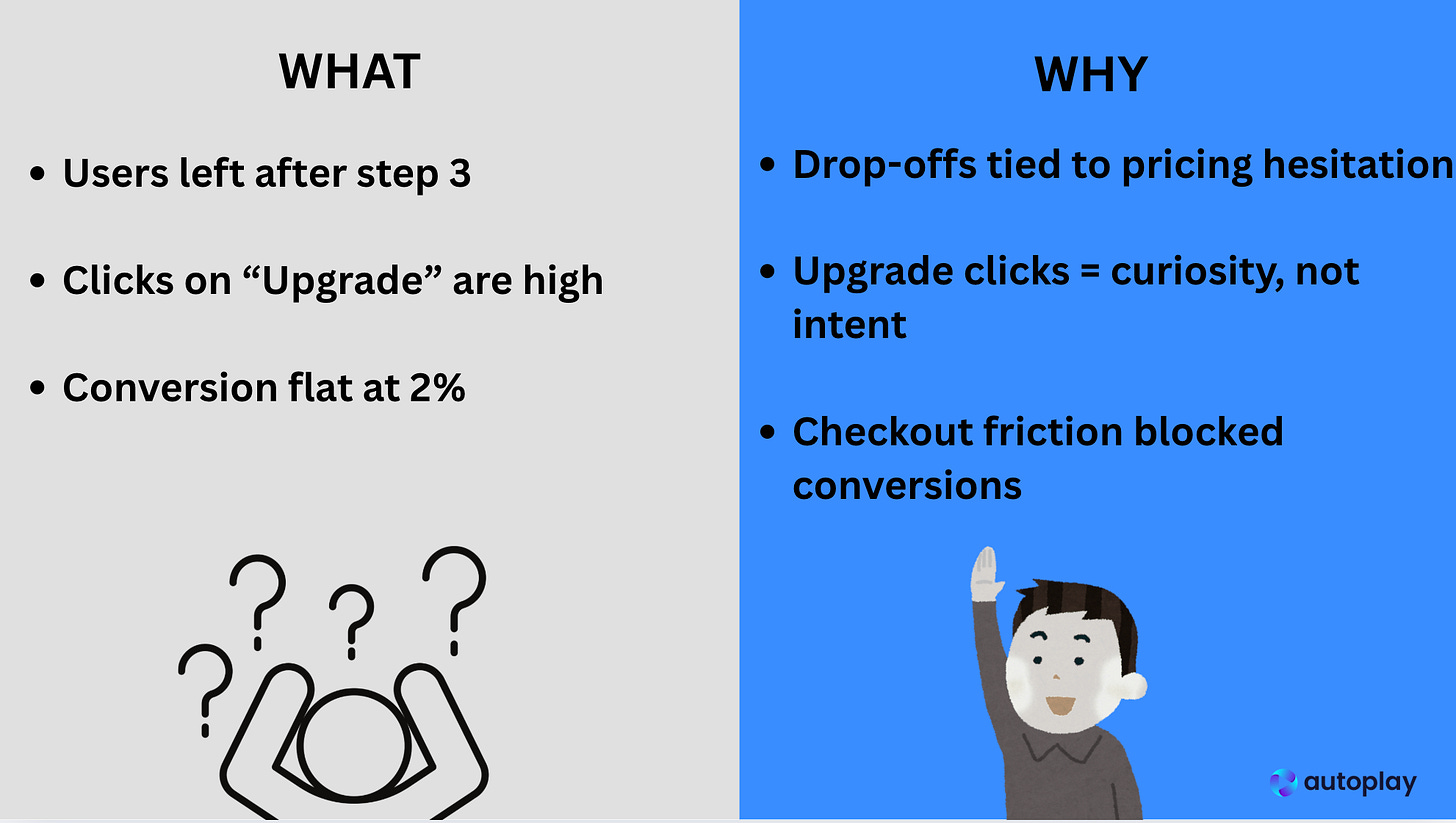The Hidden Cost of Not Knowing “Why”
Dashboards show the what. Product success depends on the why.
Every SaaS team has dashboards that look like progress:
📈 Sign-ups up 15%
📉 Onboarding drop-offs at 40%
👀 Engagement steady
Until someone asks, “Why?”
And that’s where most teams fall silent. The what is clear. The why is missing. And for product teams, that blind spot creates adoption risk, wasted roadmap time, and slower activation.
The Cost of Only Knowing “What”
When you only see the what, you end up chasing symptoms instead of causes:
Sprints wasted on fixes that don’t move the needle
Roadmaps cluttered with “maybe” features
Support teams stuck firefighting
Activation rates flatlining as users stall before conversion
The bigger cost is hidden: roadmap risk. Every week spent guessing is a week lost in compounding adoption, feature impact, and ultimately customer lifetime value.
When Misjudging “Why” Hurts
The risk isn’t abstract, it shows up in product history.
Take Skype’s 2017 redesign. The team optimized for flashy “Stories” and new features, while the real friction was in core communication. Adoption dropped, trust eroded, and Microsoft eventually rolled back the changes.
The lesson here: when you optimize the wrong problem, you don’t just waste a sprint. You derail adoption.
Why Current Tools Don’t Solve It
Most analytics tools tell you what happens, not why:
Funnels show where users drop, not motivations
Replays take hours for a handful of hints
Heatmaps track clicks, not intent
The result? Teams confuse activity with insight. Roadmaps fill with guesses. Adoption stalls.
What PMs Can Do Today
Even without new tools, PMs can get closer to why by:
Layering funnels with surveys → ask users who drop off why in the moment
Running hypothesis testing → frame assumptions and validate them with small experiments
Conducting user interviews → hear friction directly, not just infer it from data
These methods bring clarity, but they’re slow, manual, and hard to scale across an entire product.
How Autoplay Makes the “Why” Visible
Autoplay builds on these practices and makes them fast and scalable.
Hypothesis Validation
Test assumptions in minutes, not weeks. Instead of debating in standups, PMs can ask directly: “Where are users hesitating?” or “Is pricing causing drop-off?” Autoplay searches across sessions, applies intent-based filters, and validates trends inside replays. It surfaces the patterns that confirm or disprove the hunch so roadmap decisions move forward with confidence.
Golden Path Analysis
Map the optimal path to time-to-value and uncover where users drift away. Unlike traditional funnels that are URL-based, Golden Path is action-based. It groups users by how close they are to the ideal flow and explains why they deviated. PMs see the friction points, repeated workarounds, and blockers preventing activation.
This lets PMs:
Validate faster
Prioritize with evidence
Spot adoption blockers before they turn into churn
Protect roadmap focus
In short: Autoplay is turning guesswork into evidence.
Why This Matters for PMs
The hidden cost of not knowing why isn’t just revenue. It is adoption delayed, activation slowed, and roadmaps derailed.
And in SaaS, every quarter spent guessing is a quarter where competitors move faster.
Knowing what is data.
Knowing why is strategy.


